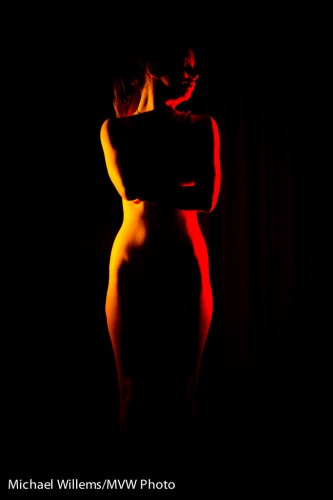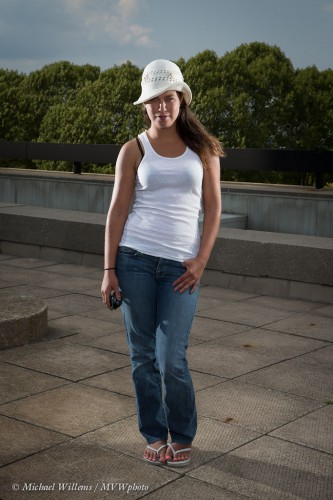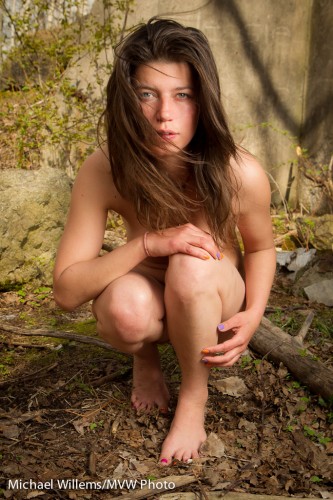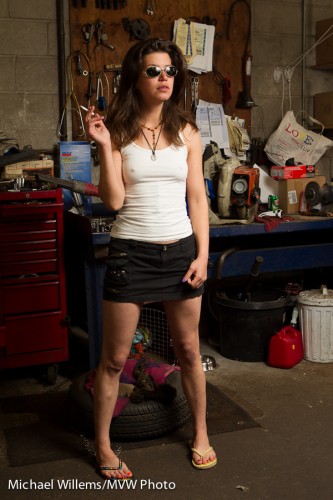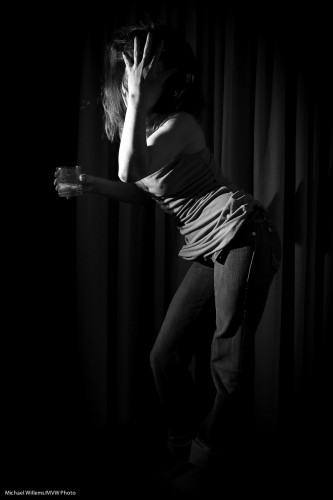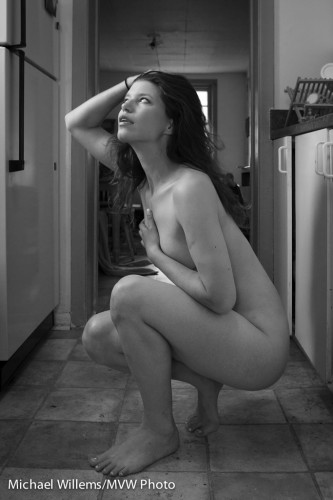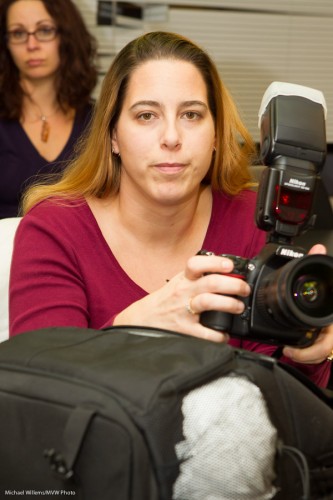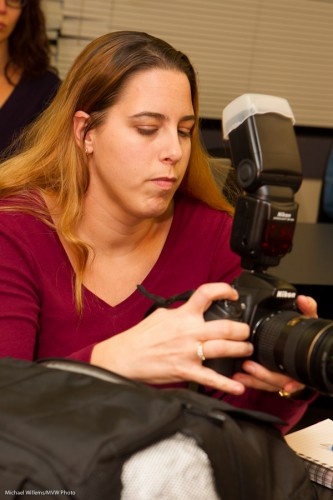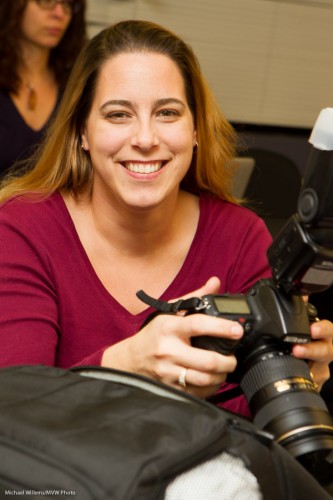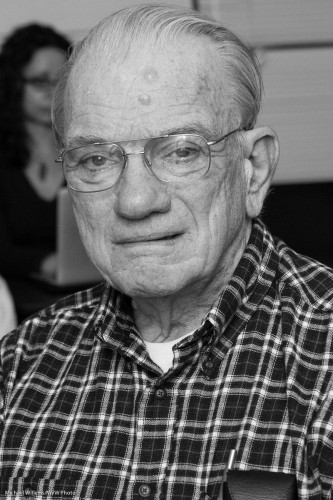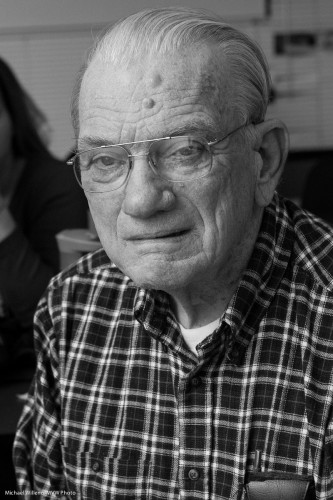Lighting is all about what you do not light.
Like in this “implied nude” shot from the other day:
How did I light this?
- Camera on manual, with settings guaranteed to make the room look dark (it was not, but the camera makes it look like it was): something like 1/125th second, f/5,6, 200 ISO.
- One flash on the camera disabled, except for sending commands (“master”).
- One TTL “slave” flash on our left, slightly back aimed forward a little, with a grid to stop light spilling, and a yellow Honl Photo gel.
- One TTL “slave” flash on our right, slightly back aimed forward a little, with a grid to stop light spilling, and a red Honl Photo gel.
Easy technique, and a lot of fun. Try to not light everything all the time. A few flashes, grids, gels: all you need!

